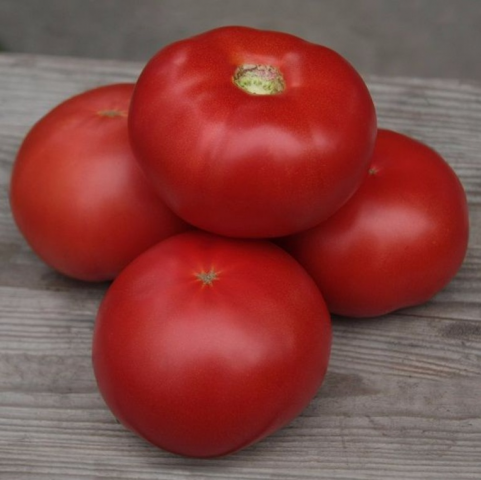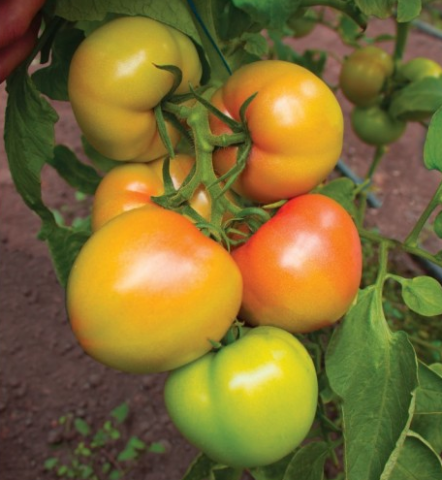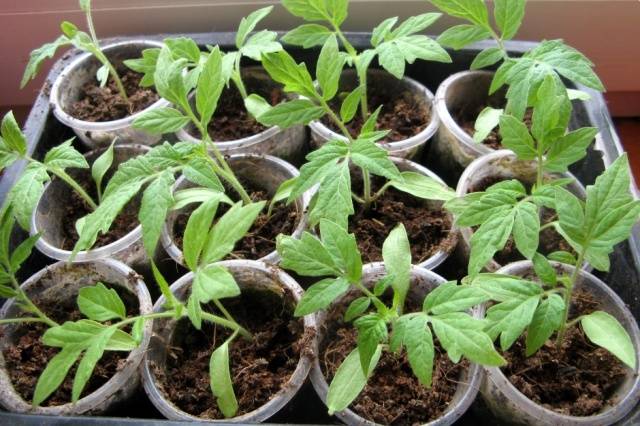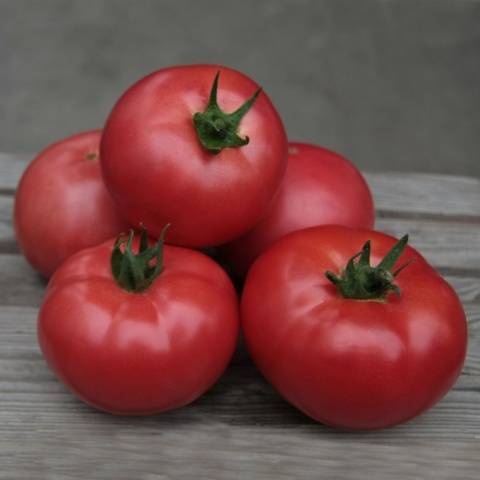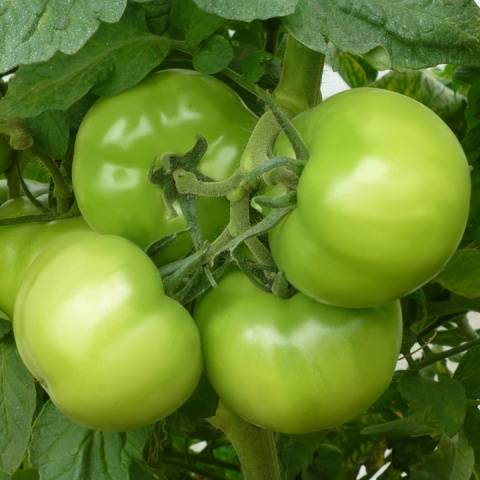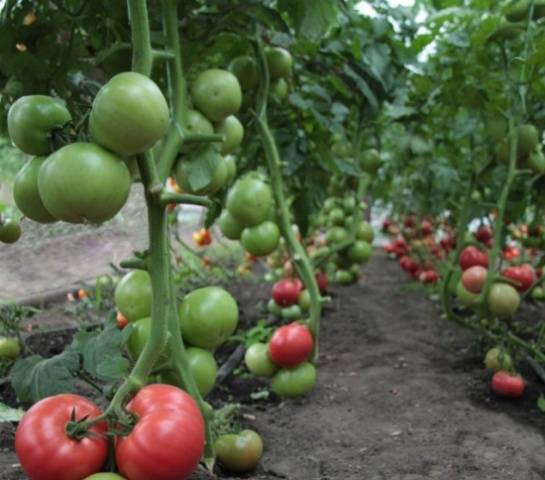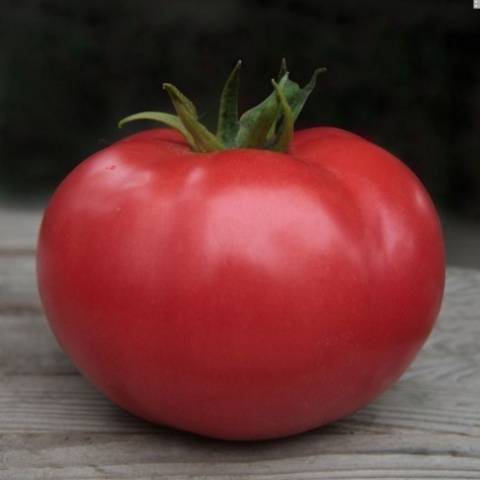Content
Tomato Kibo F1 is a product of Japanese selection. F1 tomatoes are obtained by crossing parental varieties that have the necessary qualities in terms of yield, disease resistance, taste, and appearance.
The cost of F1 seeds is much higher compared to regular seeds. However, their characteristics pay off the seed costs.
Features of the variety
The Kibo tomato has the following features:
- indeterminate variety;
- early ripening tomato;
- a powerful bush with a developed root system and shoots;
- plant height about 2 m;
- ripening period - 100 days;
- constant growth and bud formation;
- the ability to form ovaries even in adverse conditions;
- drought and temperature shock resistance;
- disease resistance.
The fruits of the variety have a number of distinctive features:
- 5-6 fruits are formed on the brush;
- rounded pink tomatoes;
- dense and even skin;
- the fruits of the first harvest are 350 g;
- subsequent tomatoes grow up to 300 g;
- good taste;
- sugar flavor;
- attractive external characteristics;
- do not crack when watering.
According to reviews on Kibo F1 tomatoes, this is a reference variety for various parameters: taste, transportability, resistance to weather changes. The variety is grown for sale, consumed fresh, used for salting, pickling and preparing other homemade preparations.
Growing order
The Kibo variety is grown exclusively in greenhouses or greenhouses. Plants are not well adapted to growing outdoors, especially in cold climates. This is chosen by farms for further sale on the market. If a heated greenhouse is used, then Kibo tomatoes can be grown year-round.
Getting seedlings
If the harvest is necessary in the fall, then the tomatoes for seedlings begin to be planted in the second half of February. From the moment the shoots appear before the seedlings are transferred to the greenhouse, one and a half to two months should pass.
Soil for planting tomatoes is obtained by combining garden soil, peat and humus. It is placed in boxes about 10 cm high. Then they begin to prepare seed material, which is soaked for a day in warm water.
About 5 cm is left between the seeds, and 10 cm between the rows. This planting scheme allows you to avoid thinning and transplanting plants into separate pots.
Cover the top of the planting with foil and leave in a dark and warm place. When the first shoots appear, the containers are rearranged in the sun. With a short daylight hours, lamps are installed above the seedlings. Plants should be exposed to light for 12 hours.
In sunny weather, tomatoes are watered every day. If the plants are in the shade, then moisture is added as the soil dries. Seedlings are fed twice with an interval of 10 days. Fertilizer is obtained by dissolving ammonium nitrate (1 g), potassium sulfate (2 g) and superphosphate (3 g) in 1 liter of water.
Planting in a greenhouse
The soil for planting tomatoes is prepared in the fall. It is recommended to remove the top layer, since insect larvae and spores of fungal diseases can hibernate in it.
It is recommended to treat the renewed soil with a solution of copper sulfate (1 tbsp. L of the substance is added to a bucket of water). The beds are dug up with the addition of humus, after which the greenhouse is closed for the winter.
Transplanting tomatoes into the greenhouse is carried out on a cloudy day or in the evening, when there is no direct exposure to the sun. The soil should warm up well. First you need to prepare holes 15 cm deep.About 60 cm is left between the plants.
It is best to place the tomatoes in a checkerboard pattern. This will allow the formation of a strong root system, provide ventilation and self-pollination of plants. After planting, the tomatoes are watered abundantly.
Care procedure
For the Kibo variety, standard care is carried out, which includes several procedures: watering, feeding with useful substances, tying to a support. To avoid excessive growth of green mass, tomatoes need pinching.
Watering tomatoes
Tomato Kibo F1 needs moderate moisture. With its lack, plants develop slowly, which ultimately affects the yield. Excess moisture leads to decay of the root system and the spread of fungal diseases.
After planting tomatoes, the next watering is carried out after 10 days. During this time, the plants adapt to new conditions.
On average, water a Kibo tomato once or twice a week. The intensity of watering is increased to 4 liters during the flowering period, however, moisture is applied less often.
The procedure is performed in the evening or in the morning when there is no direct sun exposure. Be sure to take warm water, settled in barrels. Water is brought in only at the root.
Fertilizing tomatoes
Due to fertilizers, the active growth of Kibo tomatoes is ensured and their yield increases. Tomatoes need to be fed several times per season. Both mineral and natural fertilizers are suitable for this.
If the seedling looks weak and underdeveloped, then it is fed with nitrogen fertilizer. This includes a solution of ammonium nitrate or mullein. You should not get carried away with such dressings, so as not to stimulate the excessive development of green mass.
Phosphorus promotes root growth and improves metabolic processes in plants. On the basis of superphosphate, a solution is prepared consisting of 400 g of this substance and 3 liters of water. It is best to place the superphosphate granules in warm water and wait until they are completely dissolved.
Potassium improves the palatability of the fruit. To saturate plants with phosphorus and potassium, potassium monophosphate is used, 10 g of which is diluted in 10 liters of water. Top dressing is carried out by the root method.
Tying and pinching bushes
Tomato Kibo belongs to tall plants, therefore, as it grows, it must be tied to supports. This procedure ensures the formation of the bush and its good ventilation.
For tying, two pegs are used, which are placed opposite each other. A rope is stretched between them. As a result, several support levels should be formed: at a distance of 0.4 m from the ground and after the next 0.2 m.
Stepping is necessary to eliminate unnecessary shoots. The Kibo variety has a tendency to overgrowth, so side shoots should be removed every week. This will allow the plant to direct the main forces to the formation of fruits.
Due to pinching, the thickening of the plantings is eliminated, which causes the slow development of tomatoes, high humidity and the spread of diseases.
Gardeners reviews
Conclusion
Kibo is a hybrid tomato grown in Japan. The plant has an early maturity and is suitable for indoor cultivation.
According to reviews for Kibo tomatoes, the variety tolerates changes in weather conditions and other stressful situations well. Due to the long growth period of Kibo, you can get good yields without renewing the plantings.
